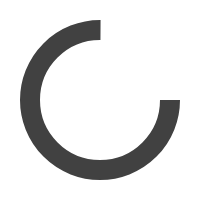We have been collaborating for over a decade with leading educational and healthcare institutions.
To this day, our devices are featured in the most published research in the field of photobiomodulation.
We have been collaborating for over a decade with leading educational and healthcare institutions.
To this day, our devices are featured in the most published research in the field of photobiomodulation.

clinical research participants
clinical research participants
clinical research participants

The effects of hydrogen have been reported in 63 disease models and human diseases (see Table 1). Only stroke and metabolic syndrome have been analyzed in both rodents and humans. Since no adverse effects of hydrogen have been observed, clinical studies are feasible even in the absence of animal research.…
Department of Neurogenetics, Center for Neurological Diseases and Cancer, Graduate School of Medicine, Nagoya University, 65 Tsurumai, Showa-ku, Nagoya 466-8550, Japan, 2012
This study suggests that applying combined photobiomodulation (PBM) therapy to the head, nose, neck, and abdomen has the potential to reduce or even reverse some clinical and non-motor symptoms of Parkinson’s disease.
2019, University of León, Department of Physical Education and Sports, León, Spain; Performance and Health Group, University of A Coruña, Spain
This study explores the effects of near-infrared (NIr) light therapy in two Alzheimer's disease (AD) mouse models: the K369I tau mutant (K3) and the APPswe/PSEN1dE9 mutant (APP/PS1). Over a period of 4 weeks, NIr therapy significantly reduced neurofibrillary tangles and oxidative stress markers in K3 mice, and decreased amyloid-beta plaques…
Department of Physiology, University of Sydney, Anderson Stuart Building F13, NSW 2006, Australia, 2014
This review demonstrates that near-infrared light at wavelengths of 810 nm and 980 nm, with an output range of 10-15 W, has been shown to be biologically beneficial at a depth of 3 cm. This confirms that near-infrared light can penetrate to a depth of 3 cm, which is sufficient…
Synaptic Space, Centennial, Colorado, USA, 2015
Exposing both sides of the rats' heads to 808-nm near-infrared light daily for 28 consecutive days significantly alleviated alpha-synuclein-induced motor impairments, as assessed by the cylinder test. This treatment also notably reduced the loss of dopaminergic neurons in the injected substantia nigra and preserved dopaminergic fibers in the ipsilateral striatum.…
Institute of Molecular and Chemical Biology of Neurodegeneration, Swiss Federal Institute of Technology (EPFL), CH-1015, Lausanne, Switzerland, and Center de Recherche du Centre Hospitalier de Québec, Ax Neuroscience and Department of Molecular Medicine, Laval University, Quebec, G1V4G2, Canada, 2015
The study results showed that MPTP-treated mice exposed to 810 nm near-infrared (NIr) light had approximately 40% greater motor activity and about 20% more dopaminergic neurons compared to non-exposed mice. In summary, 810 nm NIr, similar to 670 nm NIr, provided neuroprotective effects and improved motor activity in MPTP-treated mice
CLINATEC, EJ Safra Centre, CEA, LETI, Grenoble University, Alpes F38000, France, 2015
The study results showed that PBM treatment significantly reduced MPTP-induced astrogliosis by approximately 75% in both the SNc and striatum. However, for microglia, PBM had a more limited effect in both nuclei; while the overall size of the cells decreased, the number of microglia remained unchanged in MPTP-treated monkeys following…
Department of Anatomy, University of Sydney, F13, Sydney, 2006, Australia, 2016
This study investigated the effects of photobiomodulation (PBM) on tyrosine hydroxylase (TH) positive cells and GDNF expression in the hypothalamus. Analysis of hypothalamic slices from MPTP-treated mice, monkeys, and 6OHDA-lesioned rats showed that PBM significantly increased TH-positive cells and GDNF levels by 60-80% in MPTP-treated monkeys compared to controls. However,…
Department of Anatomy, University of Sydney, F13, Sydney, 2006, Australia, 2016
Brain PBM therapy enhances the metabolic capacity of neurons, promotes anti-inflammatory, anti-apoptotic, and antioxidant responses, and aids in neurogenesis and synaptogenesis. Interest in PBM therapy for the treatment of conditions such as dementia, Parkinson's disease, stroke, brain injury, and depression is steadily increasing
2018 Tabriz University of Medical Sciences, Neuroscience Research Center (NSRC), Tabriz, Iran
PBM uses red or near-infrared light to promote healing, enhance mitochondrial function, and improve blood flow and oxygen supply. It also reduces swelling and inflammation, decreases cell death, and promotes neurogenesis and synaptogenesis to aid brain recovery. Both animal experiments and human studies, including those involving patients with chronic traumatic…
2018 Harvard Medical School, Department of Dermatology
This study suggests that applying combined photobiomodulation (PBM) therapy to the head, nose, neck, and abdomen has the potential to reduce or even reverse some clinical and non-motor symptoms of Parkinson’s disease.
2019, University of León, Department of Physical Education and Sports, León, Spain; Performance and Health Group, University of A Coruña, Spain
The gut microbiome is known to influence metabolic disorders, obesity, cardiovascular diseases, autoimmune conditions, and even neurological disorders. A literature review was conducted to explore whether light exposure can impact microbiota composition. PBM (red and near-infrared light) applied to the abdomen in mice was found to modify gut microbiota in…
2019, Australian Research Institute, Wahroonga, Australia; University of Sydney, Faculty of Medicine, Camperdown, Australia
E-MAIL: info@huelight.kr I TEL : 02-898-2116 I HUE LIGHT CO., LTD SK Techno park E-1311. 60, Haan-ro, Gwangmyeong-si, Gyeonggi-do, Republic of Korea I Copyright 2024 © Hue Light Co., Ltd. All rights reserved
Disclaimer: The medical papers and academic information provided on this site are intended for educational purposes only and are not meant to diagnose, treat, prevent diseases, or substitute for a doctor’s advice.
Copyright 2024 © Hue Light Co., Ltd. All rights reserved
Disclaimer: The medical papers and academic information provided on this site are intended for educational purposes only and are not meant to diagnose, treat, prevent diseases, or substitute for a doctor’s advice.